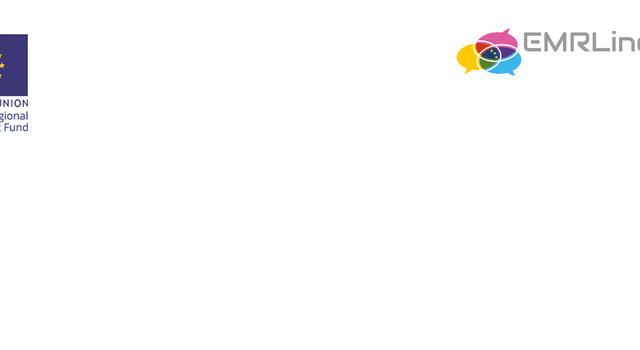
Euregional Coordination Centre for Neighbouring Languages and Intercultural Competences
The “EMR Lingua” project is a project funded by the Interreg programme of the Meuse-Rhine Euregio. This programme is financed by the the European Regional Development Fund. This project also receives financial support from the regional authorities.
The European Commission writes in its "Border Orientation Paper - Euregio Meuse-Rhine" that it is important for the inhabitants of the EMR to master each other's languages in order to enable good cross-border cooperation. The EU aims to promote mobility and understanding between cultures. In this context, the EU has identified language learning as a key priority. Accordingly, one of the objectives of European language policy is that every European citizen should be proficient in two languages in addition to their mother tongue. Where better to try to achieve this than in the trilingual EMR?
This project aims to strengthen the position of the neighbouring languages French, German and Dutch and the focus on intercultural competences in primary, secondary and vocational education in the EMR, with the aim of making borders less of an obstacle when it comes to the labour market, studying and living. By strengthening the knowledge of neighbouring languages and acquisition of intercultural competences, the potential of the Euregion as a whole will be better exploited. In the trilingual EMR, too, we see a declining interest in and mastery of neighbouring languages in favour of English. Paradoxically, increasing internationalisation does not lead to more interest in the language of neighbours or better mastery of the neighbouring language. When it comes to working and studying in the neighbouring country or region, language is still a barrier for many, which is reflected in the relatively small number of people working or studying on the other side of the (language) border. Important opportunities remain unexploited.
It is also becoming increasingly difficult to find neighbouring language teachers. Solutions can be found in attractive lessons through the use of native speakers and the use of attractive (digital) Euregional teaching materials and through exchanges and visits, putting pupils in direct contact with the neighbouring language and their speakers and with neighbour regions. The possibility of obtaining certificates (for pupils) and labels (for schools) can serve as additional incentives and strengthen opportunities in the Euregional labour market (and beyond). The proximity of three languages offers enormous opportunities to interact with the neighbouring language and its speakers in a natural, unconstrained way and to develop the necessary intercultural competences. However, many of the initiatives so far are fragmentary and depend very much on personal initiative and project funding. More coherence and cooperation between the different initiatives is therefore desirable. In order to give neighbouring language education in the EMR a sustainable structure and to bundle knowledge and skills euregionally and create synergy effects, a Euregional coordination and expertise centre should be established with the help of this project, from which a network of schools, teachers and other experts in the field of neighbouring language education and intercultural competences will be maintained and supported. This centre will serve as a central contact point for cross-border exchanges between teachers, best practices, in-service training and workshops, school exchanges and visits and individual exchanges of pupils or study visits in the neighbouring country or region.
The management of the school labels Euregio Profile School and Euregio School will be assigned to the coordination centre. The centre will also coordinate, facilitate and support the updating and exchange of existing Euregional teaching materials and, above all, the development of attractive digital teaching materials in the three Euregion languages. The project period serves to establish a Euregional coordination and expertise centre for neighbouring languages and intercultural competences. Bringing this centre under a cross-border organisation like the EMR office, which has been operating for a decade, ensures its Euregional and structural character. The participation of Maastricht University (ITEM), UCLL and associated partners Hogeschool Zuyd, Nederlandse Taalunie and Nuffic guarantees scientific support for the project. For sustainability, it is important that the centre is structurally supported by and from the EMR sub-regions after the project.
Click here for info about the project partners.
- Bezirksregierung Köln (DE)
- Das Pädagogische Landesinstitut Rheinland-Pfalz (DE)
- EP-Nuffic (NL)
- Euregio Meuse-Rhine (BE)
- Kreisverwaltung Düren (BE)
- Kreisverwaltung Euskirchen (DE)
- Kreisverwaltung Heinsberg (DE)
- Maastricht University (NL)
- Ministerium der Deutschsprachigen Gemeinschaft Belgiens (BE)
- Nederlandse Taalunie (NL)
- Province de Liège (BE)
- Stichting Voortgezet Onderwijs Parkstad Limburg SVOPL (BE)
- StädteRegion Aachen (DE)
- Vogelsang IP (Ordensburg) (DE)
- Zuyd Hogeschool (NL)